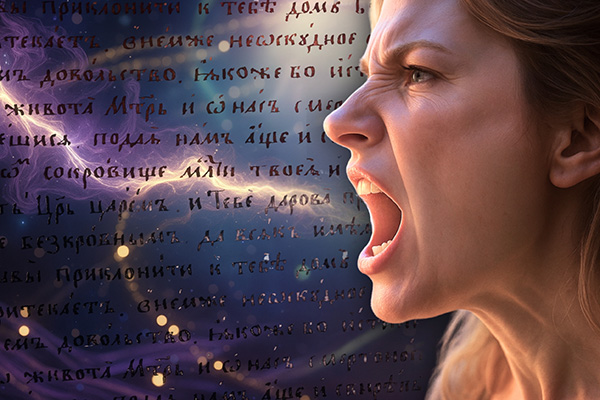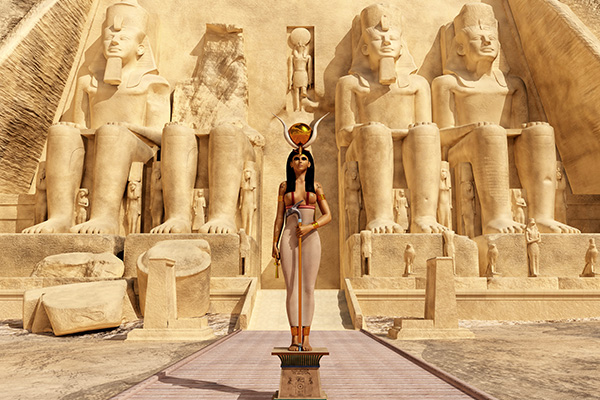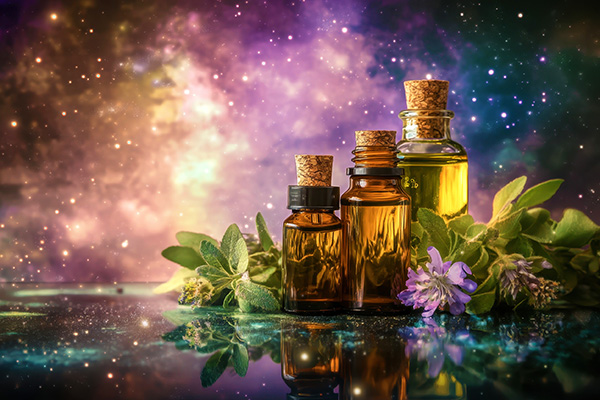ancient egypt
The Spiritual Power Of The Words You Speak
 Have you ever stopped to truly consider the words you speak? Most of us talk all day, every day, without realizing the impact of each syllable we send out into the world.
Have you ever stopped to truly consider the words you speak? Most of us talk all day, every day, without realizing the impact of each syllable we send out into the world.
Words are much more than just communication sounds. They’re vibrations, frequencies, and intentions. Whether spoken softly, shouted out loud, or whispered quietly to yourself, every word carries mystical energy.
In many spiritual traditions, the spoken word is seen as a powerful metaphysical force or divine power. It is a force of creation and transformation.
From magical incantations to sacred ceremonies, words have long been used to shape everyday reality, influence the world and improve life.
The earliest recorded reference to the power of speech dates back to ancient Mesopotamia. In the city of Uruk, magical incantations were found carved onto clay tablets dating back to approximately the 5th century BCE. These spoken spells were used for protection, healing, and influencing others, revealing a deep understanding of the energetic and powerful nature of speech as early as 2,500 years ago.
Around the same time, the ancient Egyptians believed in the concept of heka, which is often translated today as “magic” but really means “divine creative power.” They believed the gods used heka to create the world, and that humans could access this same creative power through sacred words called hekau.
What I Learned From Egyptian Goddess Hathor
 From the moment I first encountered her, Hathor, the ancient Egyptian goddess, she felt like a luminous companion on my spiritual path.
From the moment I first encountered her, Hathor, the ancient Egyptian goddess, she felt like a luminous companion on my spiritual path.
To me she isn’t just a myth or a symbol. She’s a living presence and a spiritual guide. She’s also a gentle yet powerful presence in my psychic and healing work. Her energy speaks to me on a deeply intuitive level.
My connection with Hathor began unexpectedly while reading a book on ancient Egypt. Suddenly, I felt a comforting warmth surround me. It was as if a long-lost friend had returned.
Then, I was guided to raise my hands, palms facing outward and I sensed her hands and palms facing mine. A glow of golden light flashed before me and I felt a warm sensation entering my palms and almost as though my hands were being supported and held, and all time was suspended.
In that timeless and powerful moment, Hathor’s nurturing love enveloped me, and her ancient wisdom whispered that time is merely a construct.
In the Infinite Light, there is no past or future, only this sacred now. In is in the present moment that healing and miracles unfold.
As a psychic, I find that Hathor naturally aligns with my practice. She is not just the goddess of love and beauty, though she radiates both. She embodies a vibrant, nurturing energy that opens emotional and spiritual channels.
Why Psychics, Healers And Empaths Use Essential Oils
 Essential oils have long been sacred allies in spiritual and healing traditions around the world. Extracted from the aromatic essence of plants, these oils carry more than just fragrance; they carry the energetic blueprint and vibrational frequency of their botanical origins.
Essential oils have long been sacred allies in spiritual and healing traditions around the world. Extracted from the aromatic essence of plants, these oils carry more than just fragrance; they carry the energetic blueprint and vibrational frequency of their botanical origins.
In spiritual practice, essential oils are potent tools for emotional alignment, energetic cleansing, and deepening our connection to the self, spirit, and earth, far surpassing their role as mere pleasant scents.
Essential oils act as bridges between the tangible and the intangible. They provide sensory cues that encourage relaxation of the body, focus of the mind, and openness of the spirit. While they don’t replace deep inner work or professional guidance, they provide gentle, supportive energy that enhances existing practices.
The use of essential oils in spiritual practices is anything but modern. Prophets, priests, shamans, and oracles across the ancient world worked with aromatic oils and resins as sacred tools to facilitate divine connection, purification, and inner vision.
In ancient Egypt and the Near East, frankincense and myrrh were revered not just for their fragrance, but for their ability to open spiritual gateways. Frankincense, often referred to as “liquid gold,” was burned in temples and used in rites of passage. Myrrh featured in sacred anointing blends and was considered essential for emotional release and spiritual attunement.
The Spiritual Implications Of The Lazarus Syndrome
 Recently, while watching the 2008 film The Lazarus Project, I was reminded of the paranormal phenomenon of near-death experiences (NDEs) and became intrigued by the possibility of someone coming back to life after death.
Recently, while watching the 2008 film The Lazarus Project, I was reminded of the paranormal phenomenon of near-death experiences (NDEs) and became intrigued by the possibility of someone coming back to life after death.
The plot of the movie is about a man who is given a second chance at life after being executed for a crime. Despite being lethally injected, he somehow wakes up in a psychiatric hospital and must overcome a series of mysterious and mystical challenges to be reunited with his family.
The title, of course, refers to the story in John 11 of a man named Lazarus who was raised from the dead by Jesus after four days. While the plot of the movie does not directly parallel the biblical story, it does draw on the themes of resurrection and second chances.
My newfound curiosity soon led me to discover a documented medical phenomenon known as “Lazarus Syndrome.” Also known as the “Lazarus phenomenon” or “autoresuscitation,” it is a rare medical condition in which a person spontaneously comes back to life after all attempts at resuscitation have failed and the person has been pronounced dead.
The phenomenon was first noted in medical literature in 1982 by Finnish anesthesiologist Dr. Kalevi Linko, who described it as the spontaneous return of circulation after resuscitation efforts have ceased. The term “Lazarus phenomenon” was later popularized by Dr. John Francis Bray in 1993, who used the biblical reference to describe these rare cases of patients who spontaneously return to life.
The Magic Of Dowsing Stands The Test Of Time
 Dowsing, also known as “divining” or “water witching,” is an ancient practice that uses a tool such as a pendulum or divining rod to locate what is hidden, most commonly underground water, minerals, or lost items. it is also a divination method used to tap into the unseen or mystical to gain spiritual, psychic, or energetic insights.
Dowsing, also known as “divining” or “water witching,” is an ancient practice that uses a tool such as a pendulum or divining rod to locate what is hidden, most commonly underground water, minerals, or lost items. it is also a divination method used to tap into the unseen or mystical to gain spiritual, psychic, or energetic insights.
While skeptics dismiss it as pseudoscience, dowsing has persisted in many cultures for thousands of years, standing the test of time as a mysterious blend of mysticism and physics. I believe its continued presence throughout history speaks to its importance and continued relevance in today’s technological society.
Dowsing has ancient roots dating back thousands of years, although its exact historical beginnings remain uncertain. Archaeological evidence suggests that the practice dates back to ancient Egypt and China, where early civilizations used rudimentary dowsing techniques to locate water and minerals. Cave paintings in North Africa from around 8000 B.C. depict people holding forked sticks, which many experts believe may be dowsing rods.
The ancient Greeks and Romans were also familiar with dowsing, especially for locating underground water sources. They considered the dowsing rod or pendulum a sacred tool capable of tapping into hidden energies. It was believed that certain materials, especially wood or metal, could act as conduits for detecting invisible forces in the earth.
In the Middle Ages, dowsing became more widely practiced in Europe, often by miners searching for metal veins, especially during the mining booms in Germany and England. However, due to its inexplicable, mystical nature, dowsing also increasingly became associated with the occult and witchcraft, leading to its condemnation by the church.
How To Use A Wand In Your Energy Work
 It is not widely known that a magic wand is so much more than a mere fantasy accessory in popular stories like the Harry Potter series andThe Chronicles of Narnia.
It is not widely known that a magic wand is so much more than a mere fantasy accessory in popular stories like the Harry Potter series andThe Chronicles of Narnia.
While popular culture has certainly cast wands in a fun, magical light, their true potential as metaphysical tools in real-world spiritual and energy work is less known and mostly underestimated.
Far from being a fictional artifact, a wand has traditionally served as a conduit for directing intention and channeling energy. When used with respect and purpose, a “magic” wand can be a vital tool in one’s metaphysical practice.
I view my wand as an energy tool to harness and direct intention as a means to bring about change in myself, another person, a pet, or a situation. Whether I’m working directly with someone in a healing session or using it remotely with a photo or personal object, my wand helps me focus healing energy to address blocks, wounds, or even negativity.
In a healing session, I use the wand to direct energy to where it’s needed most. This may mean helping someone release emotional blocks, alleviate physical pain, or transform negative energy.
Wands have a rich history in various cultures and have been used in many ancient civilizations. In ancient Egypt, for example, staffs and wands were used by priests and deities as symbols of authority and power. These objects were decorated with mystical symbols and believed to have protective and healing properties. Similarly, in Mesopotamia, priests and shamans used wands in religious rituals and ceremonies.
Understanding The Higher Self
 In modern spirituality and metaphysics, the concept of the “higher self” is generally considered a cornerstone of spiritual awareness and conscious living.
In modern spirituality and metaphysics, the concept of the “higher self” is generally considered a cornerstone of spiritual awareness and conscious living.
The idea that we have a “higher self” is found in many spiritual and mystical traditions, although it may be called by different names and understood in different ways.
Despite these differences, the underlying idea is that there is a higher, more enlightened aspect of our being that we can connect with and embody.
Often mentioned in discussions of intuition, mindfulness, enlightenment, and the search for deeper meaning, the higher self is seen as a guiding force or eternal soure of wisdom that transcends our everyday consciousness.
Yet despite the common use of this term in modern spiritual communities and teachings, there remains a great deal of confusion and variation in how the higher self is understood and interpreted. There are many different opinions and beliefs. Some see it as our inner connection to the divine or universal consciousness. Others see it as the true spiritual essence, free from the limitations of the human ego. And some simply see it as an alternative term for our eternal spirit or soul identity.
In my experience, most of the confusion and misunderstanding arises because the higher self is mistakenly seen as a distinct and separate entity from the soul or spirit. From this perspective, the higher self is seen as entirely separate from our soul, representing our connection to something greater than ourselves, to the divine or universal consciousness.